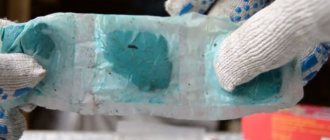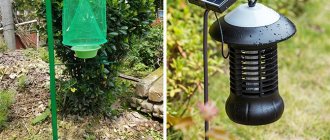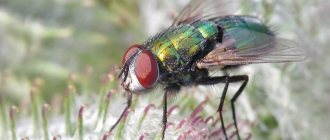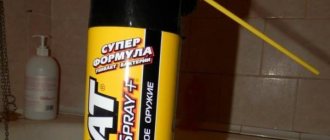The mole cricket (popularly also called the cabbage grass and earthen crayfish) is a large insect about 5 cm long that lives underground. By digging holes in the soil, the mole cricket gnaws the roots of plants, eats up tubers and root crops, which leads to loss of harvest.
Despite the fact that the mole cricket promotes soil aeration by making its passages in the ground, and destroys some pests, such as wireworms, not a single summer resident would want to have such an assistant. A couple of individuals arriving at the site at the beginning of the season are enough to make a third of your crop no longer suitable for harvesting in the fall. And if there are too many insects, it’s definitely time to sound the alarm. And the last month of autumn is the ideal time to thin out the population of crayfish in your garden.
In order for the fight against mole crickets to be effective, you need to know the preferences of this insect. The mole cricket loves the smell of sweet and intoxicating, manure aroma, twilight and moisture. Based on this knowledge, gardeners have come up with several interesting ways to combat mole crickets.
Description
For someone who doesn’t know what a bear looks like, the description may conjure up a scary monster. Considering the amount of damage it can cause, perhaps it is so. The mole cricket belongs to a group of insects, the order Orthoptera. It is not difficult to recognize it in nature - the head is similar to the head of a crayfish, the forelimbs are developed, only instead of claws, the mole cricket has powerful digging organs. The average size of the insect is about five centimeters, but there are individuals the size of the palm of an adult.
Medvedka photo
The front pair of legs of an insect is adapted for digging the ground. The middle ones allow you to run quite quickly. The hind legs are similar to the legs of grasshoppers, but they are not so developed, so the mole cricket, although it jumps, is very low.
Despite the presence of wings, the mole cricket rarely flies, at low altitude, and only if the air temperature is high enough. During cold periods, the insect cannot fly because the wing muscles are weak. A sudden danger, the call of a male, or the need to change its habitat can force the cabbage to fly.
The mole cricket's jaws can gnaw through hard root crops, but the real delicacy for it is the juicy roots of young plants. Several mole crickets can cause significant damage to the crop over the course of a season.
But the biggest danger of these insects lies in their mobility and fertility. Under favorable conditions, mole crickets easily fly over long distances, and as a result, two individuals settling on a site can breed so many offspring that the garden can become a barren desert. The mole cricket reproduces by laying a large number of eggs. From them emerge larvae that can live and develop for several years. From one pair, 200-500 individuals are hatched, and if they are not destroyed in time, they will first feed on the roots of young plants, and then begin to eat root crops. Some of the bear's favorite dishes are potatoes and beets.
Summary
Mole cricket traps help to significantly reduce the population size, but they are not able to completely rid an area of pests. For effective control, comprehensive measures are used: the roots of plants are treated with insecticidal preparations before planting, and the soil is loosened and dug up in a timely manner. To deter them, chrysanthemums and marigolds are planted, aspen stakes are installed, and the soil is mulched with pine needles. To prevent mole crickets from entering the greenhouse, deep furrows are made along the perimeter of the structure, sprinkled with sand and sprayed with kerosene.
What kind of life does a mole cricket lead?
For living, the mole cricket chooses moist areas of loose soil with rotted organic matter. The presence of manure in the soil attracts the mole cricket, and a quiet place underground with high humidity is an ideal habitat for the insect. These are the conditions that people create when they plow the soil in the spring and plant seedlings.
Mole cricket burrows
Mole crickets overwinter underground, at a depth of 25-30 cm, “hibernating”. In spring, when the soil warms up to + 15°C, insects rise higher and carry out activities at a depth of 5-10 cm, sometimes rising to the very surface. At the end of May and beginning of June, when the ground warms up to the required temperature, the mole cricket lays eggs in a specially equipped den. It is equipped in a quiet, secluded place at a depth of about 10 cm. The insect surrounds the space under the surface of the earth around the “cradle” with communicating passages, in several places emerging to the surface in the form of vertical burrows. By opening and closing one or another entrance to the system, the kapustyanka provides the necessary ventilation and temperature in the den.
You can locate the egg laying site by looking at a small area of trimmed grass located among several small holes. This is how the insect takes care of its offspring, removing the shadow over the masonry and ensuring it is warmed by the sun's rays. The mole cricket larva matures within a year.
Mole cricket egg laying
It is difficult to see the mole cricket itself during the day, since it is predominantly nocturnal. The insect moves very quickly across the surface. In case of danger, it burrows into the ground very quickly.
Application of chemistry
Sealing mole cricket burrows with cotton wool
The chemical industry produces a fairly large number of drugs used to kill mole crickets.
Almost all of them are broad-spectrum insecticides that can also destroy the following species:
- larvae of May beetles and bronze beetles
- wireworm larvae and adults
- black garden ants (breeding aphids and mealybugs)
A description of the drugs and the features of their use is given in the table:
Drug Active ingredient How to use
| Medvetox | Spectracid 25E | It is a red granular powder. Harmless to plants and many other species of earth animals, in particular earthworms. Placed between rows in long furrows up to 5 cm deep. Validity period is about 15 days. The action begins a few hours after application. |
| Anti-Medvedka | Imidacloprid | Large and small white granules. Consumption - no more than 20 g per 1 hundred square meters. Placed on the surface between the beds during planting. |
| Medvecid | Imidacloprid | Small purple granules. They are located in furrows no more than 3 cm deep between rows. The distance between the granules is 50-100 cm. Consumption is 10g per 1 sq. m. |
| Rembek | Imidacloprid and chlorpyrifos | Presents a malfunctioning strong-smelling bait. Consumption - no more than 25 g per 1 hundred square meters. Baits are placed in and around holes. |
| Boverin | Beauveria bassiana spores | A suspension is made from the substance, which is applied to plants and around mole cricket burrows. The spores of the fungus, falling on the skin of an insect, begin to germinate inside its body, which leads to death within a few days. Repeated treatment is carried out after 1-2 weeks. |
| Phenaxin-plus | Phosphothion | It is a strong-smelling white-yellow granule. Their laying is carried out at the stage of sowing seeds. Repeated treatment - 3 weeks after sowing (duration of the drug); in this case, the granules are simply placed near the stems. |
Any of the listed drugs (except Boverin) can be used in a mixture with edible bait - oatmeal, buckwheat or pearl barley porridge. Sunflower oil is also added to the bait. In the evening, the resulting mixture is laid out near the bear's burrows in the amount of 10-15 g per hole.
In addition, to combat mole crickets, acetylene is used, which is poisonous for the insect. To do this, 5 g of calcium carbide is placed in each hole and all holes are sealed with cotton wool or soft cloth, covered with earth on top.
When the substance reacts with water (in the form of rain or irrigation water), it decomposes into acetylene, which fills the mole cricket's burrows and passages. The gas quickly kills the insect.
Kerosene can also be used against mole crickets. However, this comes with some problems: due to the relatively high toxicity of the drug, it is not recommended for use in large quantities. You can fill no more than 1-2 holes on the site with kerosene; Up to 50 ml of substance is consumed for each hole.
Folk methods - what is the bear afraid of?
While there are many myths about the invincibility of the insect, experienced gardeners successfully fight mole crickets. It is possible and necessary to fight it. The main thing is to choose the right method and decide how to get rid of mole crickets in the garden. Throughout the history of agriculture, a wealth of struggle experience has been accumulated and many folk methods have been developed:
- planting plants that the mole cricket is afraid of;
- mulching;
- attracting insects;
- use of animals;
- attracting birds;
- hand fishing;
- use of chicken manure;
- application of horse manure;
- use of household chemicals.
When choosing methods of control, you need to try several methods, starting with the most harmless and least expensive. By getting results from the application, you can determine how to get rid of mole crickets most effectively. If you use any one method, it will be difficult to achieve success. Only the use of several methods at different times will help to completely get rid of the pest within a few years.
The fight against insects should begin in early spring. In the summer, June-August, during the hot period of the year, the mole cricket goes deep underground, and it is almost impossible to lure it out. But in the fall, when the air temperature drops and the rains begin, systematic destruction can be continued.
As preventive measures against the appearance of mole crickets, you can use loosening the soil or autumn plowing after harvesting. Both methods will destroy the network of passages and force the insect to leave the area to another place. To these two methods you can also add waste obtained from cleaning and gutting fish - scales, heads, fins - into holes. The bear will avoid such places and never settle.
Planting repellent plants
Imperial hazel grouse
To prevent the insect from annoying you with its presence in the garden beds, you can try to scare it away with some plants. Mole crickets absolutely cannot stand the smell of garlic, pine needles, marigolds, chrysanthemums or imperial hazel grouse. Planting these plants in the right place, if it does not scare away the mole cricket forever, will certainly protect the crop from encroachment.
You can decorate your garden with marigolds or chrysanthemums by planting them around the perimeter. Grouse, planted individually or in groups, will perfectly decorate a garden or lawn. Pine needles or branches, cut after flowering, can be laid out between rows in the beds. Planting garlic in a potato field has a good effect.
Mulching
Mulching is called covering the soil. They use sawdust, shavings, mown grass or even cardboard strips for this. In agricultural technology, mulching is used to ensure that the soil retains moisture better and to delay the emergence of weeds. In the fight against mole crickets, mulching helps to shade the soil without warming it up. If there is a lack of heat, mole crickets will go to warmer places to lay eggs.
Attracting insects
In order not to fight cabbage grass alone, you can attract insects, animals or birds. Of the insects, wasps are the best helper - when they see a mole cricket, they sting her, paralyzing her, and then lay eggs directly into her body. When the mole cricket recovers from the wasp poison, it goes underground again, becoming a living “incubator” for the wasp’s offspring. Of course, the mole cricket can no longer have its own offspring, and after the “cubs” of the wasp appear, the cabbage mole cricket dies.
To attract wasps to the garden, you can water the plants with weak sugar syrup or spread wood chips coated with honey over the beds. The smell of honey, by the way, will also encourage the mole cricket to come out of its hole to the surface.
Use of animals
Of the animals that live in gardens and orchards, the best allies in the fight against mole crickets are moles and hedgehogs. They are the ones who massively destroy insects during their “night hunt” when the mole cricket comes to the surface. And moles also skillfully search for a clutch of mole cricket eggs underground. This is one of the favorite treats for animals. As a result, one masonry destroyed by moles will save the garden from hundreds of insects in the future.
Attracting Birds
Birds are one of the best helpers in the fight against harmful insects. They are the first to flock to feast on cabbage in a freshly plowed field. When digging or plowing the soil in the beds, there is no need to scare away crows and starlings, which stride importantly through the arable land, looking for prey.
To attract birds to “work” on the site, it is advisable to install birdhouses and feeders near the beds. If you feed the birds in winter, then in spring and summer they will definitely return the favor, helping to destroy the mole cricket.
Hand fishing
A fairly effective method, although irrational, is to catch insects and destroy them. To catch a mole cricket, you need to lure it outside. During the day she sits underground, and at night, when she comes out, nothing can be seen without a lantern. In addition, at night the mole cricket can fly away, since they fly mainly at night.
To lure out insects, you need to lay out sheets of plywood, cardboard, and thick fabric on the beds on a hot sunny day. Around the middle of the day, having raised the shelter, you can find up to several dozen cabbage ducks under it, gathered to bask. This is where you need to catch them very quickly and put them in a jar or bucket prepared in advance. You need to act very quickly, as these individuals run very quickly and burrow into the ground.
Application of chicken manure
Chicken manure must be diluted in a ratio of 200 grams per 10 liters of water. After dissolving the droppings, you need to water them between the rows and paths between the beds. Dry pieces can be thrown directly into mole cricket burrows. But you can't overdo it here. When soaked, the droppings saturate the soil with a large amount of nitrogen, and at the stage of setting fruits and tubers, nitrogen is dangerous both for the plants and for those who grow them. Nitrates appear in fruits and tubers.
Chicken manure is also used for preventive measures in the fall. To do this, it is necessary to plow the soil with droppings before winter. The mole cricket will feel uncomfortable spending the winter and will go elsewhere.
Use of household chemicals
Having discovered exits to the surface, you can drive out the cabbage grass by filling the holes with water and soap or washing powder. It is allowed to use water remaining after washing. 3-4 minutes after the start of flooding, the mole cricket will leave the hole, escaping from the poisonous stream. At this time, it can be caught and collected, since it is inactive. And on a clear sunny day, the cabbage plant itself will die from the rays of the sun.
This method should be used with caution, especially in beds with plants that will be eaten. Chemically active substances can penetrate into root vegetables, and then end up in food.
What kind of “beast” is this?
The mole cricket, scientifically called Gryllotalpa, is an insect with a rather repulsive appearance.
The length of its rigid body with wings varies from 5 to 7 cm. The insect's chest shell is hard, and allows the head to partially hide under its protection. The mole cricket’s head is “decorated” with strong horny jaws, framed by two pairs of tentacles, two large compound eyes and long antennae. The forelimbs of this insect are more developed than the others, and are designed for digging passages underground. The head, chest and upper surface of the insect's body are dark brown, and the abdomen and limbs are lighter, olive-brown. The mole cricket prefers well-fertilized, especially manured soils, and digs vertical passages in them, the depth of which can reach 100–120 centimeters. As a rule, such a passage ends in a horizontal chamber in which adult insects overwinter. The larvae overwinter in vertical passages at a depth of 60-80 cm.
Why was she called “Medvedka”?
This pest got its name because of its clumsy, profusely pubescent dark brown body. In addition, in some areas the mole cricket is called the “earthen crayfish” because of its jagged, serrated forelimbs in the form of ticks. Because of the special attention this pest gives to young cabbage plants, it is also called “cabbage weed” or “cabbage weed”. Young insect larvae are gray in color and have a huge appetite, for which they are nicknamed “tops.”
How is it dangerous?
The mole cricket happily feeds on seeds sown in the ground and underground parts of garden crops such as tomatoes, cucumbers, various types of peppers and eggplant. Plants damaged by this insect dry out and are quite easy to pull out of the garden. In crops such as potatoes, carrots and beets, the mole cricket chews through the stems, eats the roots and gnaws large cavities in the root crops.
The fact that there is a mole cricket in the area is evidenced by small hillocks of soil formed from rolled up lumps of earth.
When thinking about ways to combat mole crickets, you should remember that this insect can move not only underground. This pest is able to swim quite well in water, and also fly considerable distances at night.
Birds do not pose a threat to this insect, as it leads a secretive lifestyle.
Mole cricket traps
When expelling a mole cricket from an area, there is always a fear that it will return. To prevent this from happening, you need to figure out how to get rid of the mole cricket forever. To do this, the area must be fenced with a solid fence. Under the ground, it should block the insect passages to a depth of 50-60 cm, and even 40-50 cm in height is enough so that the mole cricket does not fly over it. That is, an ordinary solid fence on a shallow strip foundation will be an ideal barrier for insects. After constructing such a barrier, you can begin to catch and destroy.
Jars of beer or honey
Mole cricket trap
To catch mole crickets using beer, you need to dig a large glass jar - 2 or 3 liters - into the ground. The edges of the jar should be flush with the ground surface or 5-10 mm above it. At the same time, the earth should not crumble into the jar. It is better to cover the top of the trap with a small sheet of cardboard or plywood, then the insect will not have to leave the network of underground passages, and it will be more willing to climb into the jar.
If you need to pour a little beer inside or lubricate the walls with honey, the cabbage mushrooms will gather on the smell and end up in the jar. Insects will not be able to get out along the vertical glass walls. All that remains is to extract them and destroy them.
Using horse manure
To catch cabbage grass using horse manure, you need to put it in a heap somewhere in the corner of the plot in the fall. Since fresh manure contains a lot of undigested grass, it will gradually rot in the heap, and this will raise the temperature inside.
Mole crickets from all over the area will gather in the warmth to settle down for the winter. With the first good frosts, you just need to scatter the manure on the snow or frozen ground - the insects will freeze out.
Buckets with compost
As a variation on the manure trap, you can use buckets filled with grass clippings or partially rotted compost. They need to be buried in the corners of the site so that the top is level with the ground. The top of the bucket should be covered with pieces of plywood or sheet iron. When the cabbage mushrooms climb into buckets for the winter, you can remove them from the bucket and destroy them.
Beer
A regular bottle of beer will help you catch the cabbage fish. A container with a small amount of drink is placed at an angle in the hole. If the bottle is in a horizontal position, then it will not be difficult for the pest to get out of it.
Mole cricket traps
The recess with the bottle is covered with plywood or a sheet of metal, which will protect the structure from the penetration of sunlight. The mole cricket will definitely pick up the beer aroma and after a while it will certainly end up in the bottle.
On a note!
There is no need to look into the trap every day. One bottle can contain more than a dozen individuals.
Chemical control
The chemical industry produces many insecticidal preparations that successfully combat
bear:
- "Medvetox";
- "Medvecid";
- "Boverin";
- "Rembek";
- "Phenaxin Plus"
As a rule, it is enough to add the recommended amount to the soil during autumn and spring digging, or directly into the holes. Experienced gardeners, when adding this “delicacy” to the bear, flavor it with vegetable oil so that the smell attracts insects.
The dosage and method of use of the drugs are always described on the manufacturer’s packaging. It is imperative to comply with these requirements, since if you save on money, you can skip the spring wrestling season. As a result, the mole cricket will get another year, during which it will breed huge offspring.
Despite its terrible appearance and ability to quickly multiply and spread, the systematic and methodical destruction and scaring away of this monster insect will clear the area of it and get an excellent harvest.
If you read this article to the end, you may have found it helpful. Share the information with your friends and like-minded people, and they will thank you. Join our groups on social networks, write comments, help make the project even more interesting!
Eggshell
Traps with eggshells are good at saving garden plantings from mole cricket invasions.
- Grind the eggshells and sprinkle them with sunflower oil. You can add cereal, cooked until half cooked.
- Place bait in the ground.
- After eating the bait, the insects' digestive system is injured and they die.
On a note! An easier way to use eggshells involves burying the crushed product in the soil. Constantly bumping into sharp objects, mole crickets will look for other habitats.
Wind structures
Wind repellent for mole crickets
Mole crickets do not really like vibrations and noise in occupied territory. Therefore, various repellers occupy a separate niche among anti-casserole remedies. Such a device produces sound vibrations that force the mole cricket to leave the area. They are quite expensive, about 500 rubles for the simplest model.
Honey bait
Honey trap for garden pests
Experts have proven that mole crickets are very attracted to sweet smells. Therefore, you can use this knowledge to combat the pest.
- The trap is prepared from a 1-2 liter glass jar, honey and vegetable oil.
- The inner surface of the jar should be smeared with oil, and a little honey should be placed on the bottom.
- A ready-made trap for cabbage grass is buried in the beds. This should be done at a slight angle so that the pest can easily climb there.
- The top of the jar should rise 1-2 cm above the surface. Cover the top of the jar with a board or piece of linoleum so that water, debris and other unnecessary materials cannot get in there. It is enough to leave a small gap into which the earthen crayfish can crawl.
Regular loosening of the soil
The mole cricket prefers well-moistened areas rich in humus.
Therefore, the gardener
needs to loosen the soil on a regular basis,
which will not only prevent the formation of a surface crust, but also destroy the passages of this insect, which soon leaves the area.
Photo of loosening the soil
In the fall, it is recommended to dig up the entire garden by hand or with a walk-behind tractor, being sure to turn over and break up the layer of soil,
which will mechanically destroy all pests. This work must be carried out immediately before the onset of frost, after which the mole cricket dies from the cold in the frozen ground.
Prevention
Even after chemical treatment of the dacha plot, it can return. The only solution to removing mole crickets from the garden forever is preventive measures to help avoid the appearance of a new colony. There are several proven methods.
- Digging and loosening the soil in spring and autumn means that the cabbage plant will not remain in the area where its home is in danger.
- Earthen crayfish does not tolerate alder and bird cherry. You can plant seedlings around the perimeter or install a barrier of fresh twigs, deepening them 30 cm. It is not always possible to find them in large quantities.
- The insect tries to stay away from marigolds, calendula and chrysanthemums.
- Kapusyanka lives in the top layer of soil. If you block her path to the site, she will not dig, but will turn in the other direction. The barrier is made from wooden scraps or a mosquito net is dug along the fence. It should be immersed to a depth of 50 cm.
- When sowing, furrows and holes in the ground are treated with iodine solution.
- Sand moistened with kerosene is scattered around the perimeter of the garden.
We have compiled instructions for fighting earthen cancer in a video to make it easier to familiarize yourself with.
Lantern with bucket
Mole crickets are unique insects that can dig, fly, and swim. In the warm season, at dusk, males begin to sing songs while sitting in a hole, attracting the attention of females. The latter, hearing the vibration, crawl out of their holes and rise into the air. Capable of covering distances of several kilometers. They rise above the ground up to 5 m. You can take advantage of this.
The mole cricket trap is constructed in May-June, during the mating season, when insects fly:
- turn on a bright flashlight;
- A bucket of soapy water is placed underneath it.
Insects fly into a bright light, hit a lantern, and fall into the water. They find their death there. In one night you can collect half a bucket of pests.
Soap solution
One of the simplest and easiest methods to use.
When you see the entrance to Medvedkin’s underground kingdom, prepare a soap solution and add it in a small stream directly into the hole! Just 1-2 liters of water and the insect jumps out of the hole. All that remains is to catch and neutralize it. Special opinion
Many sources advise making “any” soap solution, even from washing powder. I will risk not supporting these tips. Washing powders contain phosphates, optical brighteners, synthetic fragrances and many other additives that have absolutely no business in the soil of our gardens! In the end, basic laundry soap is both cheaper and safer (besides, there is a lot of evidence that even simple clean water drives mole crickets out of the ground...)











